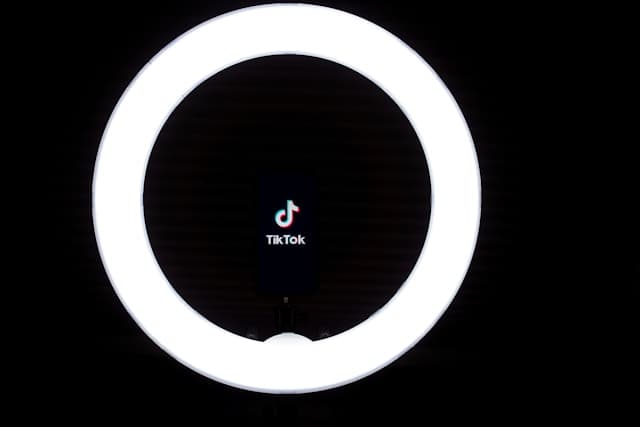
How to Partner with TikTok Influencers the Right Way

Table of Contents
| Section |
|---|
| The Role of TikTok Influencer Partnerships |
| Understanding TikTok Influencers |
| Criteria for Selecting TikTok Influencers |
| Strategies for Partnering |
| Best Practices |
| Challenges |
| Case Study |
| Conclusion |
The Role of TikTok Influencer Partnerships
Partnering with TikTok influencers has emerged as a pivotal strategy for brands aiming to enhance their visibility and engagement on the platform. TikTok, known for its rapid content consumption and viral trends, provides a unique environment where influencers can sway consumer behavior and shape brand narratives. Effective partnerships with these influencers can significantly drive brand awareness, foster community engagement, and ultimately lead to increased sales, making the understanding of this dynamic landscape crucial for marketers in the digital age. Discover strategies for effectively leverage TikTok influencer collaborations for growth.
TikTok influencers can be classified into various categories based on follower counts, including macro, mid-tier, micro, and nano-influencers. Each category offers different advantages: macro-influencers provide expansive reach, while micro and nano-influencers tend to yield higher engagement rates through closer audience connections. Evaluating influencers requires a careful analysis of key metrics such as engagement rates, follower growth, and audience demographics, which inform brands on the suitability of potential partners for their campaigns.
However, partnering with TikTok influencers is not without challenges. Brands must navigate potential misalignments in values, the volatility of influencer reputations, and issues related to measuring the effectiveness of these collaborations. Concerns over authenticity and influencer fraud also necessitate thorough vetting processes to ensure genuine partnerships that resonate with target audiences. Despite these hurdles, a well-structured approach to influencer selection and collaboration can yield substantial benefits, as demonstrated in successful case studies where brands have achieved significant growth and engagement through strategic influencer partnerships.
Understanding TikTok Influencers
TikTok influencers play a significant role in shaping content and driving engagement on the platform. To effectively partner with these influencers, it is essential to understand their categories, metrics, and how TikTok's algorithm promotes content.
Categories of TikTok Influencers
TikTok influencers can be categorized based on their follower count, which can help brands identify the right partners for their marketing campaigns:
- Macro-Influencers: These creators have more than 1 million followers and provide a massive reach along with significant engagement.
- Mid-Tier Influencers: With follower counts ranging from 100,000 to 1 million, they appeal to a more targeted audience.
- Micro-Influencers: Typically having between 10,000 and 100,000 followers, these influencers often showcase higher engagement rates.
- Nano-Influencers: With up to 10,000 followers, they usually have niche audiences and establish personal connections with their followers.
Key Metrics for Evaluating Influencers
When assessing TikTok influencers, several metrics are crucial:
- Engagement Rate: This metric reflects how well an influencer connects with their audience through likes, comments, and shares, which are vital indicators of success. TikTok's algorithm favors content with higher engagement rates, enhancing visibility.
- Follower Growth Rate: Monitoring the increase in follower count over time helps gauge the effectiveness of the influencer's content and audience growth strategies. A consistent increase may indicate successful engagement, while a decline suggests a need for reevaluation.
- Follower Demographics: Understanding the characteristics of an influencer's audience—such as age, gender, and location—can inform brands on the potential fit for their products or services.
Utilizing TikTok's Features for Influencer Discovery
Brands can leverage TikTok's built-in tools to discover potential influencers:
- For You Page: This customized feed surfaces content based on user preferences, allowing brands to find influencers popular within their target niche by browsing regularly.
- Search Function: Brands can search for specific keywords or explore relevant hashtags and challenges, leading to potential influencer partnerships.
- TikTok Analytics: This tool provides insights on influencer performance, including engagement metrics and content performance statistics, aiding in more informed decision-making.
Competitive Analysis and Third-Party Tools
Monitoring competitors' collaborations on TikTok can reveal influencers that resonate with similar audiences. Additionally, third-party platforms like Heepsy, Socialbakers, and HypeAuditor can facilitate searches for creators based on niche, reach, and engagement metrics, streamlining the influencer discovery process. By understanding these aspects, brands can effectively identify and collaborate with TikTok influencers who align with their marketing goals and target audience.
Criteria for Selecting TikTok Influencers
When seeking to partner with TikTok influencers, it is crucial to establish clear criteria to ensure effective collaborations that resonate with your target audience. The following key factors can guide the selection process.
Engagement Metrics
- Engagement Rate: The engagement rate is a vital indicator of how effectively an influencer's content sparks interest among their audience. A high engagement rate signifies that followers are actively interacting with the content, rather than just scrolling past it. Brands should prioritize influencers with strong engagement rates as they are more likely to generate genuine conversations around the promoted content.
- Follower Count: While follower count provides a basic understanding of an influencer's reach, it is essential to recognize that not all followers are equally valuable. Brands should assess follower count alongside other metrics to gauge the influencer's overall influence. Tracking changes in follower count over time can also offer insights into the effectiveness of the influencer's content strategy.
- Follower Growth Rate: The follower growth rate reflects how quickly an influencer is gaining followers over time. This metric indicates the momentum of their audience growth and can suggest that the influencer's content is resonating well. A consistent growth rate may be a positive sign for potential partnerships.
Niche and Content Alignment
- Relevant Niche: Identifying influencers within the same niche as your brand is essential for ensuring that the content produced is relevant and engaging to the target audience. Collaborating with influencers who share a similar focus can enhance authenticity and drive better results in campaigns.
- Content Style: Evaluating the content style of potential influencers helps ensure alignment with your brand's image and messaging. Researching their past posts and interactions can reveal how they communicate with their audience and whether their style complements your brand values.
Authenticity and Value Alignment
Establishing a connection based on shared values between your brand and the influencer is crucial for fostering trust and credibility. Authentic partnerships are built on mutual goals and an understanding of what each party hopes to achieve. When brand values align with those of the influencer, the resulting campaigns are more effective and resonate deeply with the audience.
Utilizing Influencer Marketing Platforms
Brands can leverage influencer marketing platforms that utilize data and analytics to identify potential TikTok influencers who match their values and messaging. These platforms can streamline the selection process by offering insights into audience demographics, engagement metrics, and content styles.
Community Engagement
Engaging with communities related to your niche, such as Facebook groups or Reddit forums, can uncover additional influencer opportunities that may not be easily found through traditional methods. Networking within these circles can lead to discovering emerging influencers who align with your brand's goals.
Strategies for Partnering with TikTok Influencers
.jpg)
Partnering with TikTok influencers effectively requires more than just selecting creators with high follower counts. It demands a thoughtful approach grounded in clear objectives, strong communication, and ongoing performance tracking.
Understand Audience Dynamics
Brands must assess both follower growth and engagement metrics to evaluate influencer impact. A growing follower base with declining engagement could indicate shallow relationships with the audience. Tactics such as interactive videos, giveaways, or comment-based discussions help sustain interest and boost algorithm visibility.
Understanding audience demographics—like age, location, and interests—is crucial to ensure alignment with your brand's target market. This helps refine influencer selection and improve campaign effectiveness.
Select the Right Influencers
The most effective TikTok partnerships occur when influencers align with a brand's values and audience expectations. Use TikTok's For You Page (FYP) and competitor analysis to spot authentic creators within your niche. Tools like Heepsy or HypeAuditor can filter by engagement rate, niche, and follower quality.
Rather than focusing solely on reach, prioritize influencers with:
- High engagement rates
- Niche authority
- Consistent content quality
- Audience alignment
Evaluate Content Quality Over Quantity
Great content resonates more than a massive follower count. Study past sponsored posts to assess the tone, creativity, and viewer reactions. This reveals whether the influencer can drive meaningful results and spark genuine interest among followers.
Build Strong Relationships
The most effective influencer collaborations are built on trust and communication. Use direct messaging, email, or even virtual meetings to stay connected. Check-ins throughout the campaign keep both sides aligned, encourage creative input, and increase the likelihood of long-term collaboration.
Track Key Conversion Metrics
If your goal is to drive traffic or sales, monitor KPIs like:
- Click-through rates (CTR)
- Landing page conversions
- Sales attributed to campaign links
Use unique promo codes or UTM links to track influencer-driven conversions. Regular testing of CTAs and landing pages can further refine performance.
Best Practices for Successful TikTok Partnerships
Get actionable tips to ensure your TikTok influencer collaborations are successful.
1. Set Clear Expectations
- Define Goals: Is your objective brand awareness, engagement, or sales?
- List Deliverables: Specify the number of videos, talking points, and key visuals.
- Establish Boundaries: Outline topics or formats to avoid and provide brand guidelines upfront.
2. Focus on Mutual Value
Let influencers have creative freedom. They know their audience best and can present your product in a relatable way. Recognize their value and support their personal brand to create a win-win relationship.
Maintain open dialogue to refine messaging, improve collaboration, and ensure smooth execution across multiple touchpoints.
3. Use Data to Guide Decisions
- Engagement Metrics: Likes, comments, shares, and saves help evaluate content resonance.
- Audience Insights: TikTok Analytics provides demographic and behavioral data.
- Conversion Tracking: Measure ROI with referral traffic and unique codes.
4. Nurture Long-Term Collaborations
- Support Their Content: Like, share, and comment to show appreciation.
- Amplify Reach: Repost their videos on your brand's profile.
- Collaborate Continuously: Discuss future ideas to maintain momentum.
Long-term partnerships often outperform one-off campaigns because they build credibility and community trust.
Challenges in Partnering with TikTok Influencers
Misalignment Risks
A mismatch in values or target audience can harm authenticity. Vet influencers thoroughly—review past content, tone, and audience feedback before committing.
Reputation Volatility
Influencers can face rapid shifts in public perception. Regularly monitor your partners to identify and react to PR issues before they escalate.
Difficulty Measuring ROI
Influencer marketing can be hard to quantify. To measure success:
- Use trackable links
- Define metrics upfront (e.g., CPM, cost-per-click)
- Benchmark results against past campaigns
Avoiding Influencer Fraud
Fake engagement is a real issue. Use platforms that flag bot followers, fake engagement, or suspicious spikes in metrics. Manually review their content and comments to validate authenticity.
Communication Pitfalls
Miscommunication over expectations or compensation can lead to failed partnerships. Be transparent about:
- Deliverables
- Deadlines
- Payment structure
Having everything in writing—via contract or agreement—reduces friction.
Case Study: UrbanTrend's TikTok Success

Objective: Drive Gen Z brand awareness and collect email subscribers.
Influencer Selection
UrbanTrend identified creators with high engagement and fashion-forward content. They emphasized authenticity over follower count and avoided influencers with misaligned values.
Campaign Execution
- Used the FYP to identify trending creators
- Studied prior successful collaborations from similar brands
- Provided influencers with creative flexibility to express their unique voice
Results
- Boosted reach and brand awareness
- Increased subscriber signups from TikTok campaigns
- Strengthened brand identity with consistent messaging
Conclusion
Partnering with TikTok influencers effectively requires a mix of creativity, data, and relationship-building. By choosing the right creators, setting clear expectations, and continuously tracking results, brands can build meaningful partnerships that drive both engagement and conversions.
To streamline your influencer collaborations and improve your TikTok engagement, try ReplyPilot. It's an AI-powered solution that helps brands respond faster, connect deeper, and grow smarter—without the overwhelm.
Continue reading
More posts about tiktok strategy




